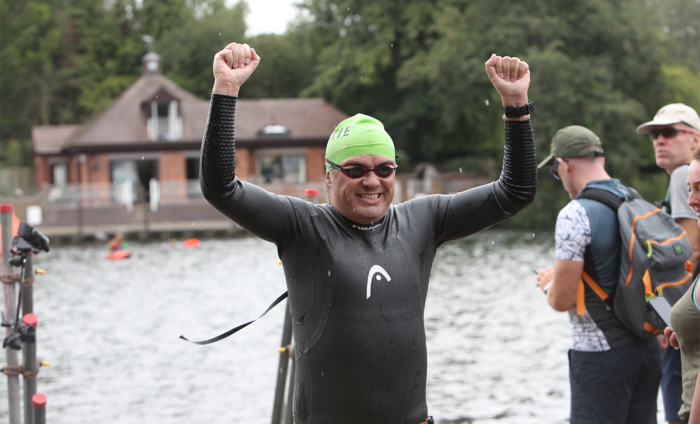
Is it safe to swim in the River Thames?
The Thames has a reputation as a dirty river. It’s not totally undeserved. I took part in the notorious Hampton Court to Kingston swim in October 2012, when I was one of 338 people who reported getting ill. No specific cause was identified. It was most likely a bacterial or viral infection. In the days prior to the race, rainfall was several times the average for the time of year. The river may therefore have been contaminated with sewage from Combined Sewer Overflows (CSOs), that can spill into the river during periods of heavy rain.
Even in low rainfall conditions, as noted by Public Health England’s report on the incident: “The river also receives discharges of treated sewage, which are not disinfected, and surface water run-off, including from agricultural land, which may be contaminated. The water is therefore considered likely to be polluted and likely to contain pathogenic microorganisms.”

Despite this, over the past few weeks, I’ve been swimming in the Thames almost daily. How do I justify that?
Regarding water quality, it’s not all bad news. Testing we’ve done with the London Water Keeper, a charity that campaigns for a “Thames fit to swim in”, has shown that in certain conditions (primarily a spell without excessive rain) the water in the Teddington area could meet bathing water standards, at least as far as e-coli is concerned. Mostly, the water looks and feels fresh and there is plenty of aquatic life, including an occasional visiting seal – all indicators of good water quality.
The water looks and feels fresh and there is plenty of aquatic life
Share
Unfortunately I don’t have the data or the modelling skills to quantify the risk accurately but can make an informed judgement. Based on the amount I’ve swum, discussions with other swimmers and incidences of illness I’ve heard about, I’d estimate the risk of a gastrointestinal illness after a one-hour front crawl swim in good conditions in the Hampton Court to Teddington area to be less than one in 100.
The reason I still swim in the Thames is because I think the rewards justify this risk. I’ve had some truly magical early morning swims in mirror flat conditions and the river almost to myself. Anyway, if I want to swim, I don’t have a lot of choice. Venues are operating but it’s a 30-minute drive to my nearest and pools are closed. Besides, I don’t have to pay to swim in the river. To reduce the risk as much as possible, I usually wait at least 24 hours after heavy rain, I do my best not to swallow any water and I try to wash my hands as soon as I finish. In addition, my experience of previous illnesses is that they have been mild and have lasted less than 48 hours. The risk of something more serious is, I believe (and hope!), much lower.
But what I’d really like is to able to swim in the Thames without any worries at all. Maybe if enough of us do it often enough, the Environment Agency and Thames Water will take notice and increase their efforts to clean it up. Wouldn’t it be amazing if our most famous river could achieve designated bathing water status?
Main image (c) Henley Swim/Tony Wallbank Photographer








